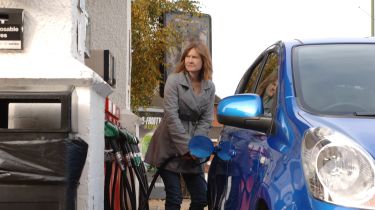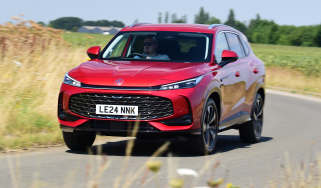Nissan Note 1.6 SVE
Jammed city roads gave us a major mpg headache
If the official figures are to be believed, my Nissan Note should be the most efficient car in our long-term trio. Unfortunately, it hasn’t been returning anything like the 42.8mpg claimed combined figure over the course of the 9,000 miles I’ve covered so far.
In fact, I’ve been getting 34.0mpg – a shortfall of more than 20 per cent. This isn’t down to anything being wrong with the Nissan – or my driving! Rather, the figure has been dragged down by the fact the supermini-MPV spends so much of its time in town, where it’s been managing only 27.8mpg.
Interestingly, with a bit of clever calculation you can roughly work out your model’s CO2 emissions. Each gallon of petrol contains about 10.5kg of carbon dioxide, due to the mix of hydrogen and carbon it contains (it’s closer to 12.2kg for a gallon of diesel). Around town, that means my Note has been putting out 236g/km of CO2 – a figure that places it in the top road tax bracket, and would mean a potential daily congestion charge of £25 if the new rules in London become effective next October!
So I’m keen to reduce my carbon output, as well as save money. But Oliver has warned me that improving mpg around town is tricky. On motorways he could simply slow down a bit, and as long as David didn’t succumb to B-road temptation, the Clio was always going to show a marked improvement. Yet the vast majority of my driving is at rush hour, travelling from south west London into our central HQ. So even if I wanted to, I rarely get the chance to drive fast or hard, and find myself trickling along with all the other traffic.
I followed the advice on the Act On CO2 website and removed any excess baggage from the boot and rear seats. Aerodynamics don’t have much of an affect at low speeds, but constant accelerating and braking with weight
on board does clobber economy. I experimented with turning the engine off when idling at traffic lights as well. The trip computer suggested this helped slightly, although I found it rather nerve-wracking hoping the 1.6-litre engine would fire up when the lights went green.
I also used the air-conditioning much less frequently, changed up earlier, made sure I left bigger gaps to cars in front and tried to predict traffic flow. All this allowed me to drive more progressively, which I did find quite relaxing.
However, I’m not the most aggressive person behind the wheel anyway, which might explain why my urban economy went up by only 4.9mpg – that still equates to a CO2 output of 190g/km. I’m disappointed as I failed to
match the claimed urban figure, although sensible driving out of town saw my overall average rise to 45.1mpg – bettering the claimed combined figure of 42.8mpg.
That means my annual fuel bill worked out over 10,000 miles tumbled by £330. However, the Note is still costing me more than £1,000 a year, so I’m praying that petrol prices don’t rise any further.
Details
Chart position: 3



